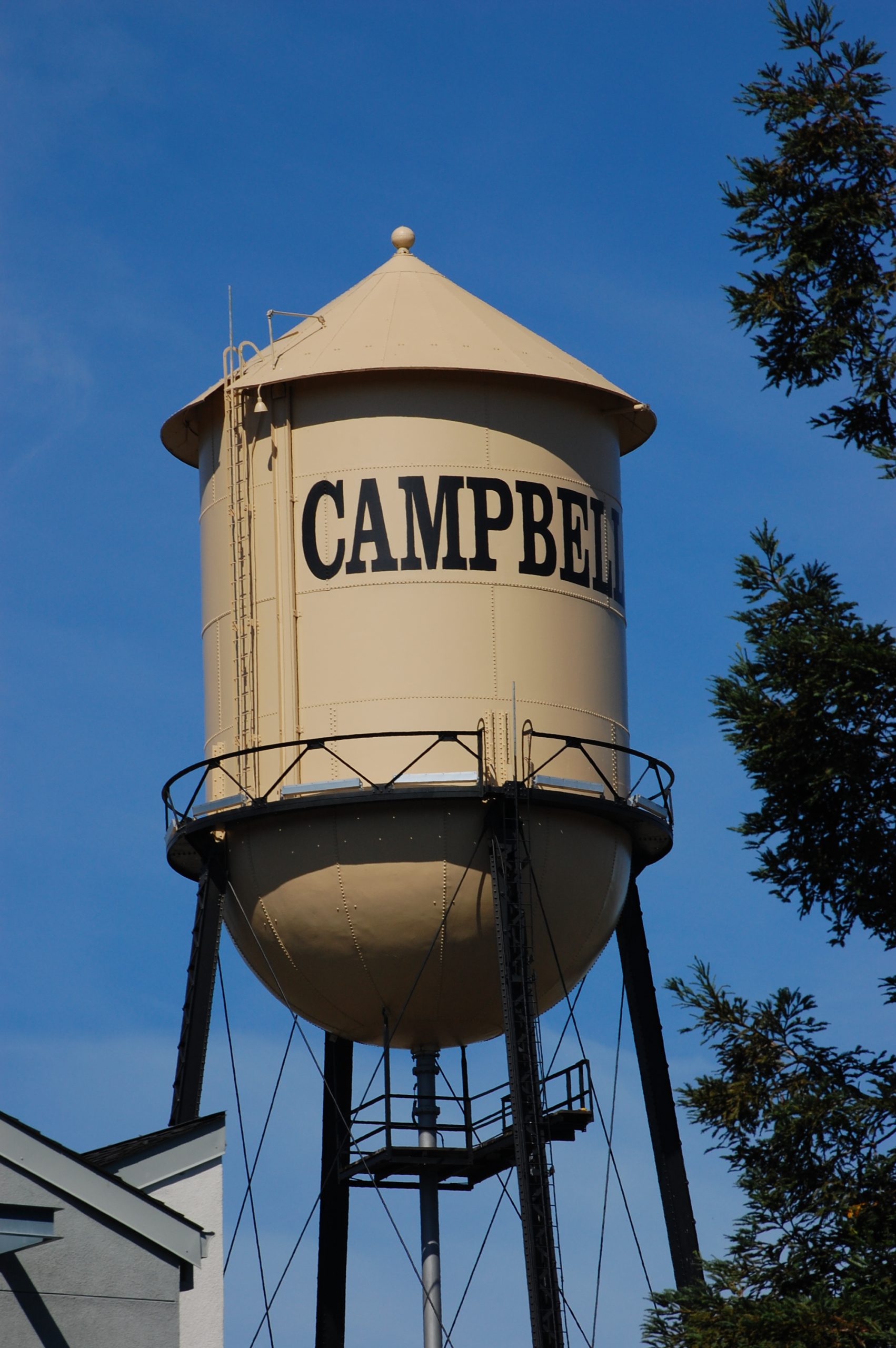Representing the spirit and resilience of historic Campbell, California stands the iconic Campbell Water Tower, a beloved landmark that was recently unveiled in watercolor by artist Sarah JL Nguyen. Since 1892, the tower has served Campbell’s agricultural community with fresh water for over a century, withstanding destruction from the 1906 earthquake and 1911 floods before settling into its familiar spot.
The History of Campbell’s Iconic Water Tower
The Campbell Water Tower, painted in watercolor in 2021 by Sarah JL Nguyen, is a beautiful representation of the city of Campbell, California. This work of art was commissioned by friends of the artist who are soon to move out of state and serves as a proud and positive reminder of their home.
This recognizable landmark, located on 1st Street at Orchard City Drive, stands as a symbol of Campbell’s agricultural past. It is well-maintained and lit up in different colors for different occasions, making it visible day or night. The surrounding area has since been remodeled into a small park, and nearby buildings have been repurposed into office space. For those who live in or have visited Campbell, the Campbell Water Tower serves as a reminder of the city’s rich history and culture.
Established in 1892 as the city’s first utility, the tower has provided fresh water to Campbell’s residents and farmers for over a century. The 1906 earthquake destroyed two wooden tanks that had replaced an earlier one, but four 20,000-gallon tanks were quickly erected in their place. Even after the 1911 flood damaged the four tanks, they were repaired and used until 1928, when the Company invested in the current 75,000-gallon steel tank. Proudly standing at one hundred feet off the ground, the Campbell Water Tower is a testament to the city’s steadfast resilience and resourcefulness.

Adjacent to the Tower, the J.C. Ainsley Packing Company and George E. Hyde and Company were major players in the Campbell fruit packing industry. A 1921 issue of a publication provides detailed descriptions of the inner workings of these factories, including an intriguing description of the “syrup room”: two round-bottom cooking tanks with open coil pipes, sixteen blending tanks, white walls, and wired glass windows that provided ample natural light. The Campbell Water Tower and its accompanying factories offer an inspiring glimpse into the city’s industrious past.
The Hyde Family Legacy
The Hyde plant was well-known for its production of various fruits grown in the valley, such as peaches, pears, and apricots. Even though growing apricots can be risky in colder climates, farmers use a technique called smudging to protect their crops during cold snaps. This process included setting off an alarm to alert everyone if temperatures dropped too low, so they could quickly light small cans filled with oil to raise the temperature around the trees. The ingenuity and dedication shown by the Campbell farming industry is a testament to the city’s proud agricultural history.
In 1937, the Hyde family’s canning business was sold to Sunsweet and they used the space for warehousing its dried fruit. The same year, Sunsweet also teamed up with local fruit growers to form the Campbell Cooperative Dryer, which went on to build the world’s largest dehydrator. After a long history of producing dried fruits, the building was eventually converted for retail in 1971 and is now remembered by the plaque outside.
The Hyde family also owned and operated the Campbell Water Company from 1918 until it merged with the San Jose Water Company in the late 1970s. With immense pride, the city of Campbell was gifted the water tower property back by the San Jose Water Company in 1994, honoring the legacy of the Hyde Family by transforming the space into a park aptly named Hyde Park.
The George E. Hyde & Co. Canning Operations of 1915-1921 proudly stamped all Choice Grade apricots and prune boxes 25# with the Sunnyside label. The Bancroft Library at the University of California, Berkeley has a collection of these remarkable images which were also captured by the GEH Brand Fruit Salad label.
The Campbell Water Tower is an iconic symbol of the city’s agricultural past, rich history, and resilience – a reminder that with hard work and perseverance, anything can be accomplished. Sarah JL Nguyen’s beautiful painting provides homage to this grand structure as well as the memories of friends who lived in it for many years. Its presence means so much to those who have known and appreciated its significance over its century-long tenure and certainly will continue to do so by inspiring onlookers near and far, even in times of physical distance.





